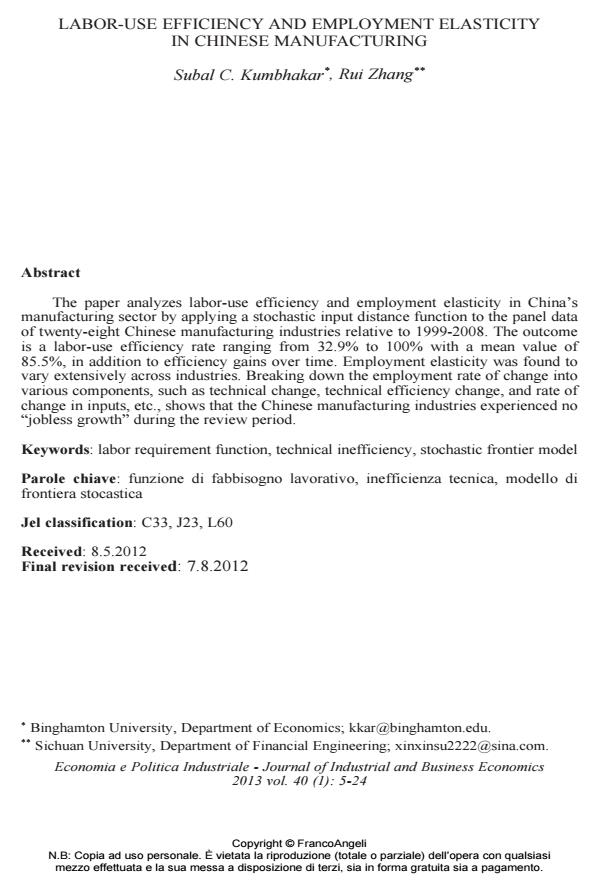Labor-use efficiency and employment elasticity in Chinese manufacturing
Journal title ECONOMIA E POLITICA INDUSTRIALE
Author/s Subal Kumbhakar, Rui Zhang
Publishing Year 2013 Issue 2013/1
Language Italian Pages 19 P. 5-23 File size 480 KB
DOI 10.3280/POLI2013-001001
DOI is like a bar code for intellectual property: to have more infomation
click here
Below, you can see the article first page
If you want to buy this article in PDF format, you can do it, following the instructions to buy download credits

FrancoAngeli is member of Publishers International Linking Association, Inc (PILA), a not-for-profit association which run the CrossRef service enabling links to and from online scholarly content.
The paper analyzes labor-use efficiency and employment elasticity in China’s manufacturing sector by applying a stochastic input distance function to the panel data of twenty-eight Chinese manufacturing industries relative to 1999-2008. The outcome is a labor-use efficiency rate ranging from 32.9% to 100% with a mean value of 85.5%, in addition to efficiency gains over time. Employment elasticity was found to vary extensively across industries. Breaking down the employment rate of change into various components, such as technical change, technical efficiency change, and rate of change in inputs, etc., shows that the Chinese manufacturing industries experienced no "jobless growth" during the review period. Keywords: labor requirement function, technical inefficiency, stochastic frontier model
Keywords: Funzione di fabbisogno lavorativo, inefficienza tecnica, modello di frontiera stocastica
Jel codes: C33, J23, L60
- Operational Research Sofia Cruz-Gomes, Mário Amorim-Lopes, Bernardo Almada-Lobo, pp.91 (ISBN:978-3-030-10730-7)
- A labor requirements function for sizing the health workforce Sofia Cruz-Gomes, Mário Amorim-Lopes, Bernardo Almada-Lobo, in Human Resources for Health 67/2018
DOI: 10.1186/s12960-018-0334-4
Subal Kumbhakar, Rui Zhang, Labor-use efficiency and employment elasticity in Chinese manufacturing in "ECONOMIA E POLITICA INDUSTRIALE " 1/2013, pp 5-23, DOI: 10.3280/POLI2013-001001